In Springfield, a futuristic shift is underway as 3D printers are crafting more than just objects — they're experimenting with a future of affordable homes. The automated technology could help create housing at the press of a button, and a five-year-old Springfield nonprofit organization is set on being among the first to apply it to aid the chronically homeless.
“There’s no one 3D-printing a whole village for homeless people, and there’s very few people 3D-printing a whole subdivision period,” said Nate Schlueter, chief visionary officer of Eden Village.

Eden Village, a Springfield-based nonprofit, houses tenants in tiny homes priced at $325 per month, utilities included. It is the first permanent housing project in Springfield for the chronically homeless. It comprises two communities: Eden Village 1 offers 31 tiny homes on East Division Street in a 4.25-acre gated community. Eden Village 2 is located in the Fairfield/Bissett neighborhood off of West Bypass and Nichols Street, and offers 24 tiny homes.
Schlueter approached the city government and a donor with the idea to 3D-print homes for a third community.
“That’s something that will put Springfield on the map in a different way,” he said.
Tiny homes, big ambitions
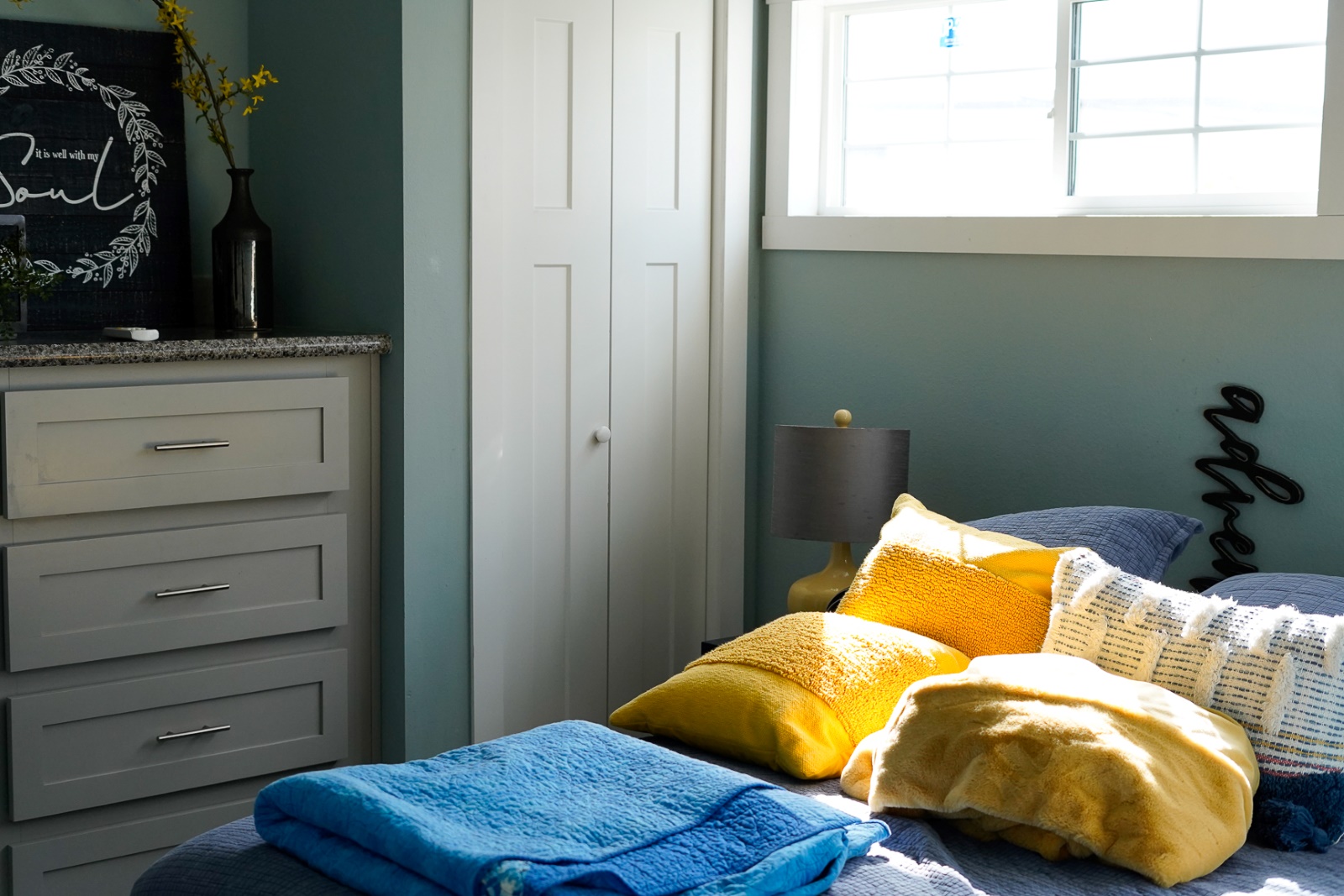
Tiny homes offer the benefits of individual living space while still being nestled into a large, supportive community. Each single-story, manufactured home has a full kitchen, living room and porch and measures about 400 square feet. For residents who have lived in unpredictable or unstable environments, a tiny home offers a degree of independence, stability and normalcy.
Renters within the gated community must meet the U.S. Department of Housing and Urban Development’s definition of chronically homeless: having experienced homelessness for at least a year — or repeatedly — while struggling with a disabling condition such as mental illness, substance use disorder or physical disability.
Bob Atchley, a senior planner with the Springfield Department of Planning and Development, said Eden Village is just one of many organizations working collaboratively to try to make sure homelessness in Springfield is brief and non-recurring.
“It has been something that has been successful and grown pretty rapidly,” Atchley said. “To go from one village since the grand opening in 2018 to now three is pretty phenomenal.”
As it prepares for its third Springfield village in the Tom Watkins neighborhood, the nonprofit expects to include 12 duplexes, housing 24 formerly unsheltered residents in 3D-printed homes. The switch to 3D printing comes at a moment when housing materials continue to rise in cost.
Hear more: Eden Village on the Business Brief podcast
According to Schlueter, printing cuts housing costs by 40% per square foot because it reduces labor and requires fewer materials.
“My three or four printing guys can replace seven different trades,” Schlueter said. “Sheet rock or insulation, framing, painters, vinyl siding, window installation. All those things happen within the context of four people and a 3D printer.”
The technology shrinks the time it takes to build a home, which reduces the duration of construction and hence the cost of labor. The machine only needs about four operators to maneuver, Schlueter said. Because the technology only deploys concrete, 3D printing also eliminates traditional housing materials, which in turn eliminates the need for those tradespeople.
Even if 3D printing saves costs in the long term, the upfront cost of one machine is steep: $1.25 million. Eden Village purchased two, with all expenses paid for by an unnamed donor.
“We’ve sunk $2.5 million into this idea of addressing homelessness rapidly with lower costs and lower maintenance,” Schlueter said.
Unlocking stability
On any given night, nearly 6,000 people are unhoused in Missouri, according to the National Alliance to End Homelessness. Breaking the cycle of recurring homelessness with permanent housing is not an approach exclusive to the Springfield organization.
Permanent housing provides a stable environment that can help individuals experiencing homelessness make healthier decisions, according to Hsun-Ta Hsu, a professor in the School of Social Work at the University of North Carolina.
Researchers at UNC are testing tiny homes as a solution for people experiencing chronic homelessness and suffering from mental illness. The university's School of Social Work has teamed with a local nonprofit on Tiny Homes Village.
“With permanent solution housing you have the key and you can lock your doors,” Hsu said. “You have the time to focus on yourself, and you have a sense of safety and security. That helps individuals to have a moment to think about what may be the next step.”
For Hsu, permanent housing solutions like Eden Village are most successful when a community is not cast aside to the fringes of a town. For example, Eden Village 2 is across the street from a preschool and a stop along one of the city’s bus lines. Integrating individuals into their broader community exposes them to positive reinforcements.
“Maybe they want to address their substance-related issue. Maybe they want to move on. The housing-first model helps to promote how people think about their next steps,” Hsu said. “Housing is better than no housing. A tiny village may create some good social support among residents. As a researcher, what I want to know is, what's the next step, right? I think we then want to think about how to help people to move on.”
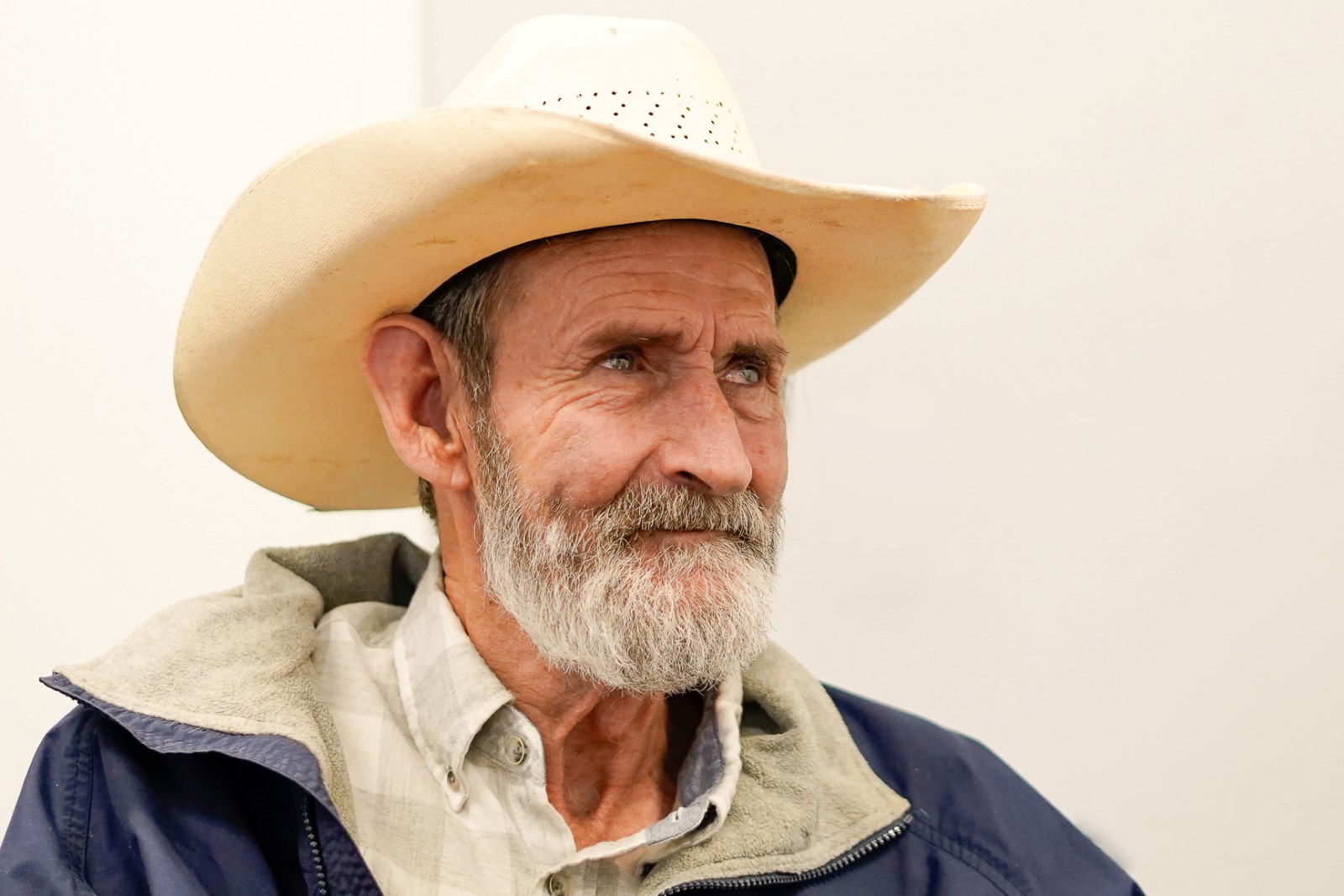
Kevin “Garrett” Lyons first learned about Eden Village in 2018 while working at a feed mill in Springfield. Now retired, Lyons relies on Social Security to pay rent. Many Eden Village residents, including Lyons, cover their living expenses with government disability checks, which are capped at just more than $900 per month.
“When I found the village, I was pretty sick at the time, and I was homeless living in a tent,” Lyons said. “A friend from work who lived at the village told me and some other people about it. I came and filled out an application, and I've been here ever since.”
Residents benefit from on-site support services, including Alcoholics Anonymous meetings, access to mental health professionals and assistance from student volunteer nurses.
Keeping tiny homes affordable
Since Eden Village opened its doors in 2018, the nonprofit has raised rent once, by 8%, to its current rate of $325. Had the original rent price kept up with inflation, tenants would be paying closer to $360 a month, meaning rent has effectively decreased since opening.
Outside Eden Village’s gated communities, rent for a one-bedroom apartment in Springfield has risen by 6% since last year to about $750. Rent in the city has risen by 49% since 2018.
Schlueter says village operations cost about $600 a month per home for utilities and staffing, which is nearly double what renters pay. To keep rent low, Eden Village relies on volunteer work to help offset maintenance costs such as repainting, landscaping and staining decks.
“The village isn’t sustainable without the community saying, ‘I want to see a city where no one sleeps outside,’” Schlueter said. “We rely on about 600 individual volunteers a month to keep the rent low.”
Each tiny home from Eden Village 2 was assembled by the Missouri manufacturer SolSource Greenbuild at a facility in Neosho. Homes arrived at Eden Village furnished, decorated and equipped with kitchen cabinets and basic appliances. When Eden Village first contracted SolSource in February 2020 for its second village, each tiny home cost $41,000. As a result of the COVID-19 pandemic, the price of housing materials skyrocketed, and so did the price of the tiny homes.
SolSource homes now cost $58,000, which the company attributes in part to increased energy efficiency measures, SolSource co-owner Vickie Boyt said.
Whether the 3D-printing technology can bring about the cost savings Schlueter projects remains to be determined, according to Peter Mueser, a University of Missouri economics professor.
“A 40% savings sounds extraordinary,” Mueser said. “If you could build houses that were 40% less expensive than your conventional methods, we're going to find that it takes over a large share of the market in as little as a decade or two, and that may happen.”
Mueser said even though a method like 3D printing eliminates labor costs, it will likely take time to determine how effective the technology is.
“Until we start building in large numbers, we won’t know exactly how much they cost relative to conventionally built houses,” Mueser said. “From what I can tell, it is still largely experimental.”
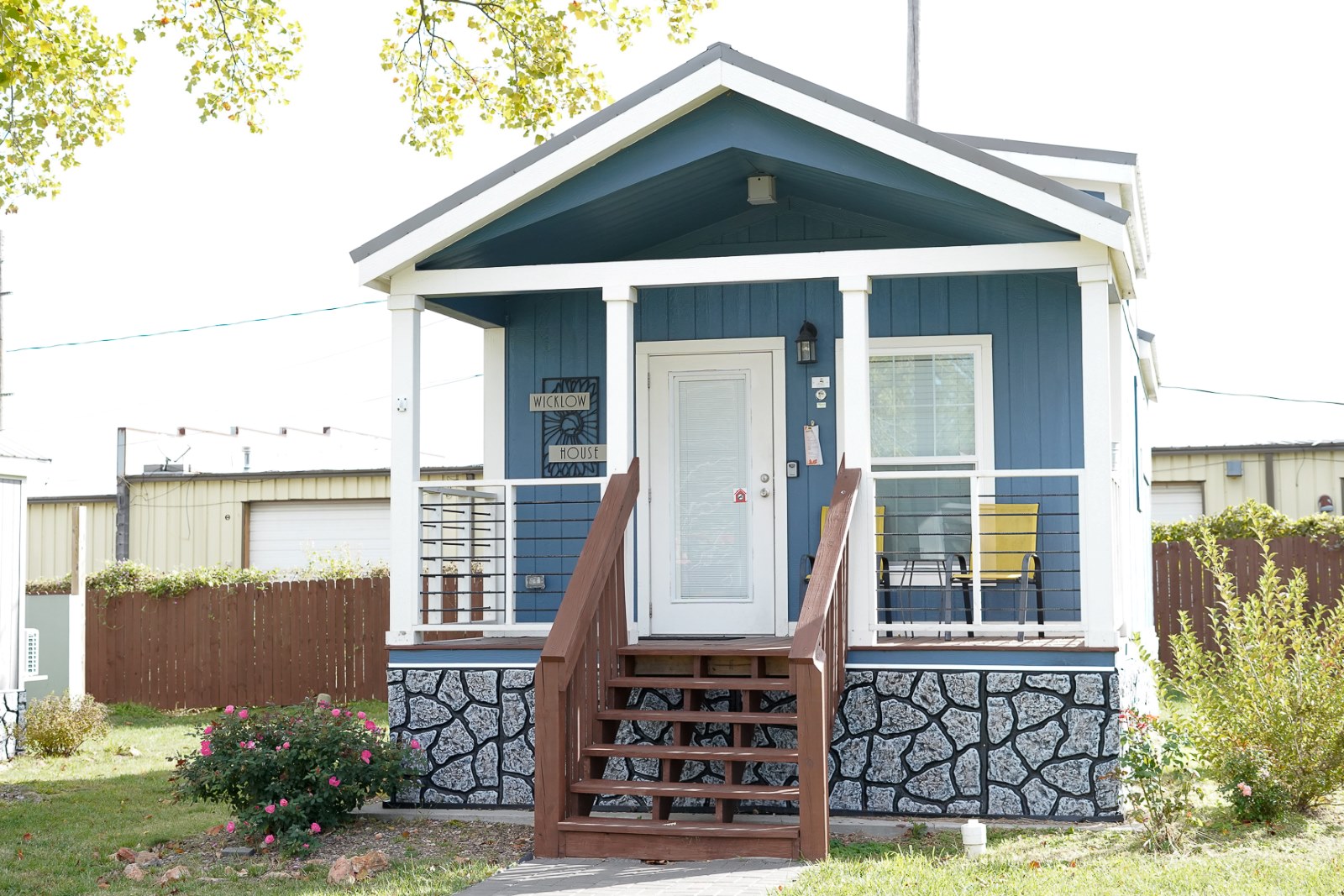
Homes within Springfield’s Eden Village communities are donated or sponsored by an individual, family or bank. The Wicklow House, for example, is a model tiny home donated and named by the O’Reilly family, owners of O’Reilly Auto Parts.
Beyond the O’Reillys, Schlueter did not disclose Eden Village’s donors, saying they prefer to remain anonymous.
Eden Village has a franchise system through which other communities can license its model for a $20,000 fee and subsequent $20 monthly payments. Franchisees receive guidance on buying property, raising money, training staff and operating like the Springfield communities do.
Schlueter said there are 13 Eden Villages being built or developed in 12 other states in addition to Missouri.
Innovating shelter
Eden Village’s 3D-printed homes are in their early stages, but the experimentation brings a sense of hope to the organization's mission. In a warehouse near downtown Springfield, Schlueter and Drury University architecture students conduct structural tests.
On a recent afternoon, printed demos one-third the size of normal tiny homes were in various stages of drying, each a different shade of gray. Several single printed layers appeared cracked or missing concrete in a few spots.
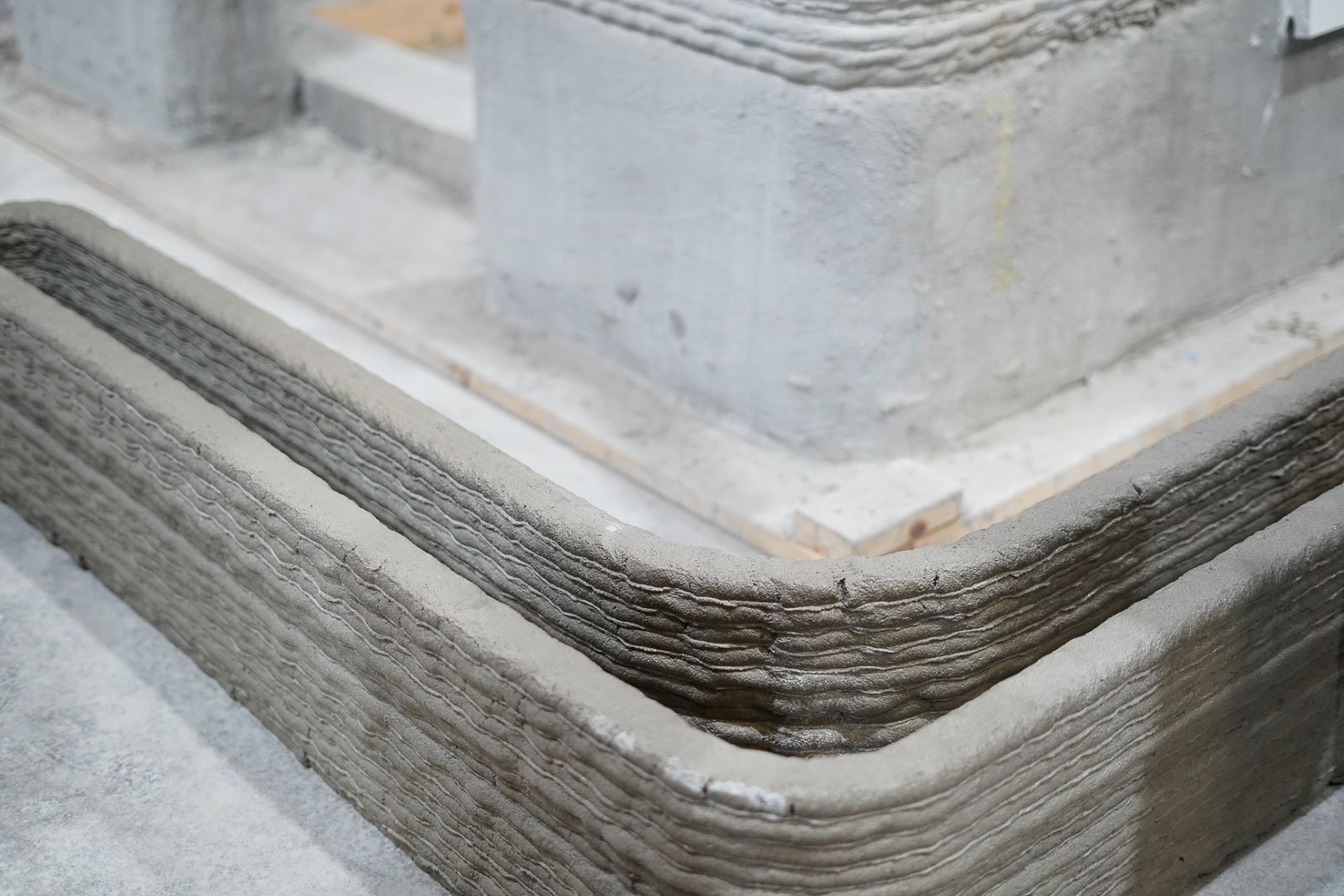
“We tend to be consistent with our batches,” Schlueter said. “But, as you can see here, that’s a dry layer with high porosity there, and the mix was thin.”
The structures undergo a “water test” and are sprayed with water at 30 pounds per square inch for 20 minutes to test the painted walls’ strength.
Temperature, wind and humidity can compromise the 3D-printing process for a home and impact the concrete’s strength by weakening the surface, leading to cracks or shrinkage. Curing, or the rate at which concrete dries, is susceptible to weather as well.
“Like pouring concrete on a driveway, there are certain days you won’t want to pour concrete,” Schlueter said.
Even though 3D printing is a mostly robotic process, changes in weather must be taken into account on an hourly basis by people onsite to adjust the amount of water in the concrete mix.
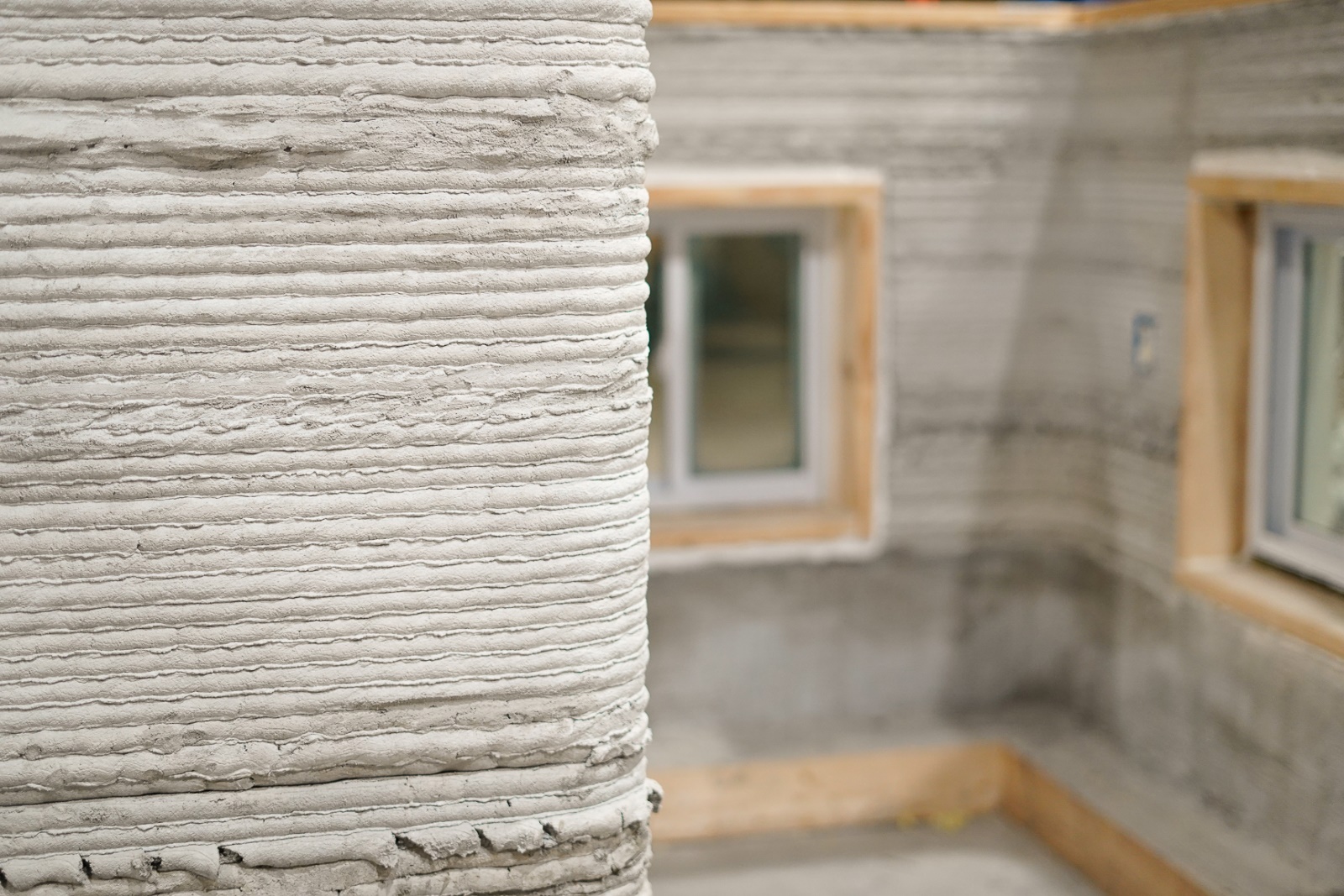
Schlueter and architectural students test-print homes in a non-insulated warehouse, with no climate control to mimic outdoor temperatures. Weather permitting, it takes between eight and 10 hours to print a 400-square-foot home. Based on tests conducted in the warehouse, Schlueter estimates a concrete home takes 28 days to cure. After 14 days, the structure is strong enough to top with a traditional roof truss.
Printing will take place on-site for Eden Village 3, where the machine will be transported and reassembled. There, four or five engineers will roll the printer to each slab in the division, printing duplexes roughly 30 feet wide by 27 feet long, with each unit measuring about 400 square feet.
For the walls, the machine prints, or sprays, the concrete mix line by line according to a set of code with X, Y and Z values. The machine’s nozzle determines the width of the concrete line. During the printing process, portions of the fresh layers are cut out or removed for electrical boxes and windows while the concrete is still wet. Once the concrete is dry, spray foam insulates the wall cavity. Homes still require an electrician for wiring, appliances and plumbing contractors.
While they work out the kinks of the new printer, Schlueter has his sights set on a print date for the beginning of 2024.
“We’re deep in this experiment,” he said. “There’s no turning back now.”
This story was produced through a collaboration between Missouri Business Alert and the Hauxeda, a nonprofit, independent, online news outlet in Springfield.


